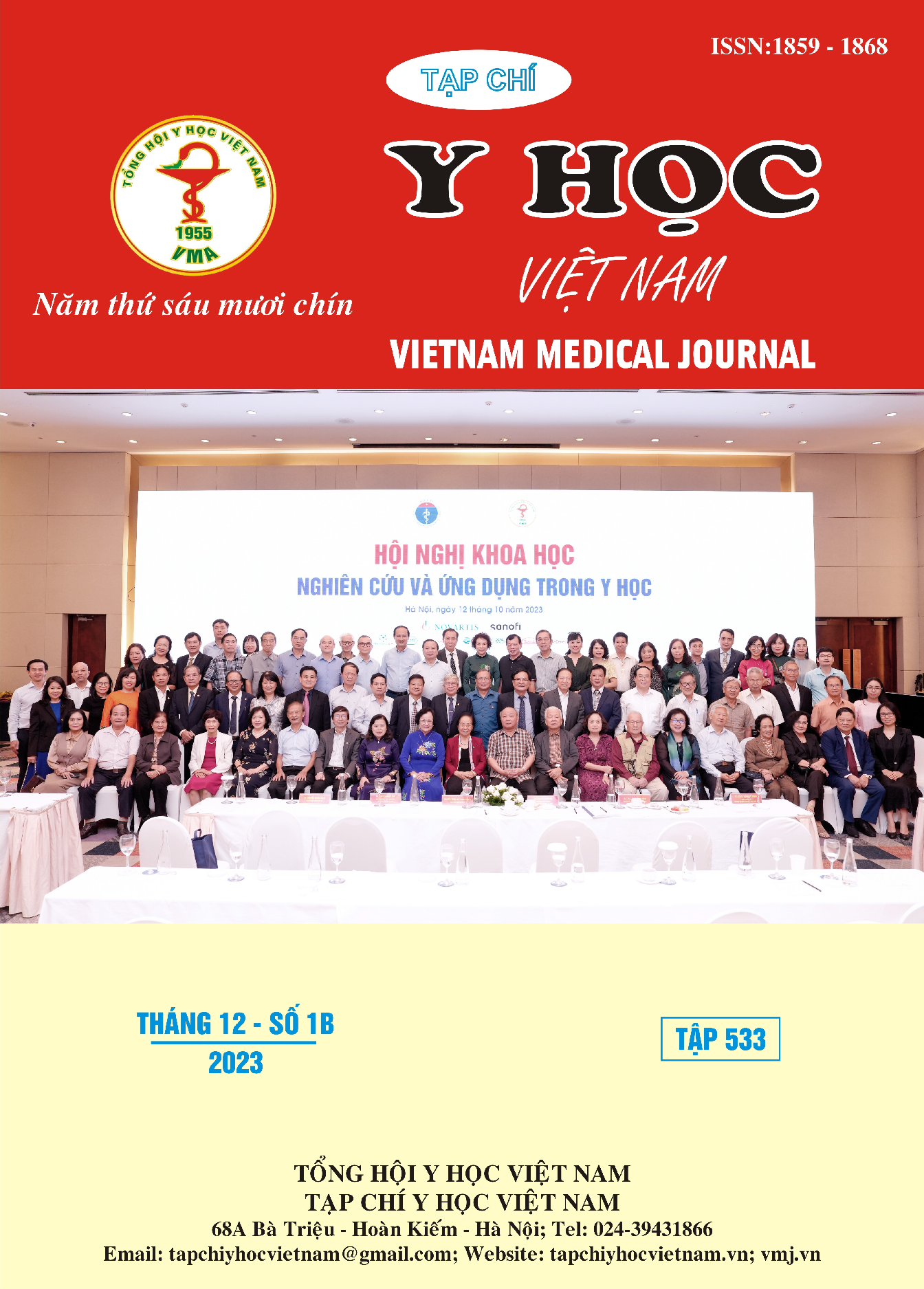ASSESS THE LEVEL OF INVASION OF EARLY ESOPHAGEAL CANCER LESIONS USING MAGNIFYING ENDOSCOPY WITH NARROW BAND IMAGING
Main Article Content
Abstract
Objective: Evaluating the correlation of invasion depth and DOI vascular characteristics in early esophageal cancer. Materials and method: This was a Cross-sectional descriptive study on 82 patients with lesions suspected of early esophageal cancer (UTTQS), who underwent diagnostic endoscopy and evaluated the depth of invasion (DOI). Endoscopic submucosal dissection at K hospital. After intervention, patients were evaluated for the correlation between the depth of invasion on histopathology and the depth of invasion through endoscopy before intervention. Results: The mean age of the patients was 58.22 ± 6.58, the mean lesion size was 29.30 ± 15.02 mm. The most common macroscopic are flat type 0IIb (43.8%) and slightly superficially depressed type 0IIc (39%). Lesions of squamous cell carcinoma in situ accounted for mainly 58.5%, esophageal carcinoma invade mucosae was less common (26.8%). The percentage of cases with a negative cross section reaches 93.9%. Conclusions: 82 patients had endoscopic features consistent with the results of early esophageal cancer and There is a correlation between the depth of invasion after intervention and the depth of invasion before intervention assessed through narrow-band endoscopy with magnification.
Article Details
References
2. Nguyễn Chấn Hùng, Phó Đức Mẫn, Cung Thị Tuyết Anh, et al (1993). Dịch tễ học ung thư hiện nay tại thành phố Hồ Chí Minh và các tỉnh phía Nam Việt Nam. Y học thực hành, 11, 31 - 37.
3. Kumagai Y, Monma K, Kawada K. Magnifying chromoendoscopy of the esophagus: in- vivo pathological diagnosis using an endocytoscopy system. Endoscopy 2004;36:590- 594.
4. WHO Classification of Tumors. Digestive System Tumours (2019), 5th Edition.
5. Japan Esophageal Society (2017). Japanese Classification of Esophageal Cancer, 11th Edition: part I.
6. Hyung Chul Park , Do Hoon Kim , Eun Jeong Gong et al. Ten-year experience of esophageal endoscopic submucosal dissection of superficial esophageal neoplasms in a single center. Korean J Intern Med 2016;31:1064-1072.
7. Hyun Deok Lee, Hyunsoo Chung , Yoonjin Kwak et al. Endoscopic Submucosal Dissection Versus Surgery for Superficial Esophageal Squamous Cell Carcinoma: A Propensity Score-Matched Survival Analysis. Clin Transl Gastroenterol 2020 Jul;11(7).
8. Mitsuhiro Fujishiro, Naohisa Yahagi, Naomi Kakushima et al. Endoscopic submucosal dissection of esophageal squamous cell neoplasms. Clin Gastroenterol Hepatol 2006 Jun;4(6):688-94.
9. Alessandro Repici, Cesare Hassan, Alessandra Carlino et al. Endoscopic submucosal dissection in patients with early esophageal squamous cell carcinoma: results from a prospective Western series. Gastrointest Endosc 2010 Apr;71(4):715-21.
10. Inoue H, Endo M. Endoscopic esophageal mucosal resection using a transparent tube. Surg Endosc. 1990;4:198–201


